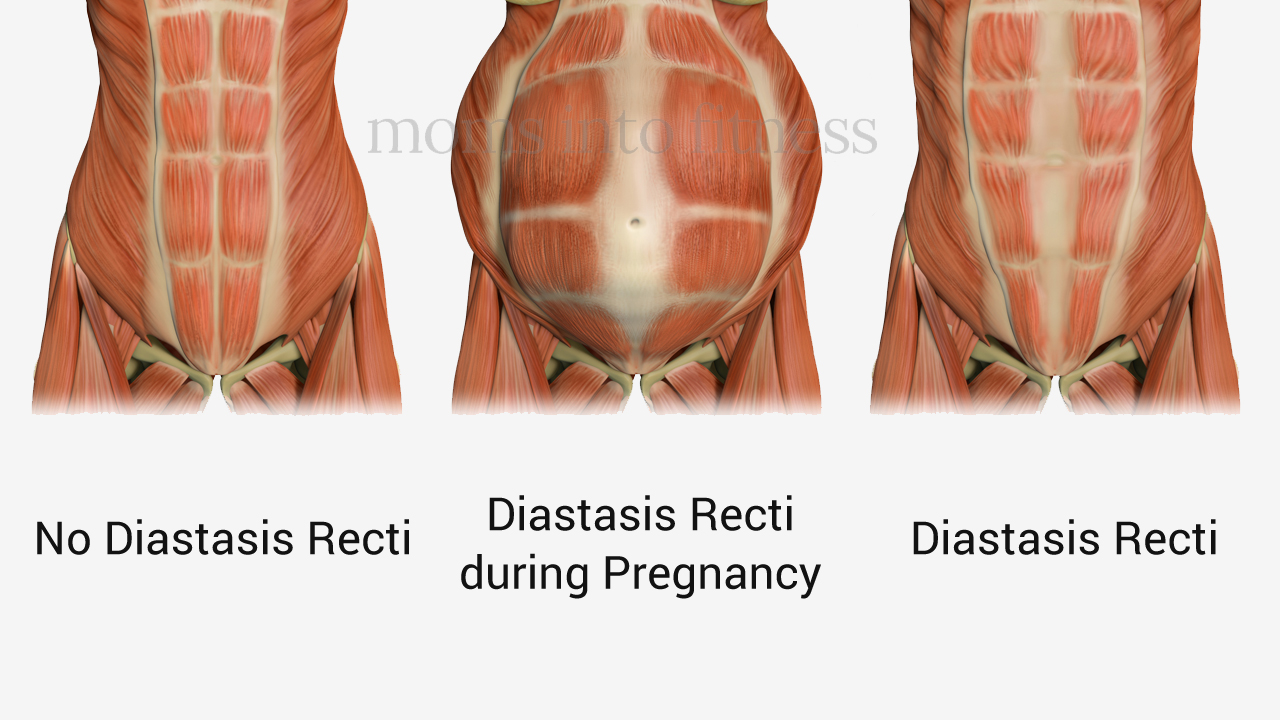
By Megan Hoover, DPT and Lindsay Brin, BS Exercise Science
“Should I run with diastasis recti?” This is a question ladies often ask after having their babies. Megan Hoover, doctor of physical therapy, answered this question for us during the Moms Into Fitness Prenatal & Postnatal Fitness Specialist Course. Here’s what she had to share.
In my idealistic physical therapy world, the answer would be no, you shouldn’t run with diastasis recti. Now, before you completely write me off … please keep reading.
While my easy answer is no, I understand that runners are a unique and wonderful group and are very driven to return to their sport. I also know that most runners are going to return to running regardless of what I say. Trust me, I know … I am one of you. My hope is that we can help you run with less impact on your DR and help you understand why running may slow your progress of reducing your diastasis and can impact your pelvic floor. Regardless if you had your baby/babies via vaginal delivery or C-section, your core and pelvic floor were impacted.
Diastasis recti abdominis (DR) is a condition in which the rectus abdominis muscle separates or thins along the middle of the muscle at the linea alba. It can be mild to severe. DR dramatically impacts the stability and integrity of your core muscles. The linea alba is made up of tissue known as fascia. Think of fascia as the saran wrap of the body. It covers our entire body, gives muscles their shape and is integral in any movement of the body. Now, think about your core as a bridge. The fascia, specifically the linea alba, is the rope along the sides of the bridge that you hold onto to cross and is what provides tension in the bridge. If you lose that tension … well, you’re probably not going to want to cross the Grand Canyon using a floppy bridge.

If you have diastasis recti, our Core Restore program will walk you through everything you need to know to gain back your core strength and function.
How do you return to running without making your DR worse? The key player: your deeper abdominals or the transverse abdominis (TA). On either side of your “floppy bridge” are winches, otherwise known as your TA. Your TA fibers run horizontally and act as the corset of your core. As your TA gets stronger, those winches crank on your bridge and you get that tension back.
Give the exercises in our Core Restore program a shot to get those deeper core muscles activating accurately and safely! With that being said… core stability and strength take time and consistency. I find that it takes about 4 – 6 weeks of performing these exercises about 4 – 5 times/week to see a measurable change. Most of you will be running in conjunction with these exercises. If you are going to continue to run with a DR, please do these exercises!
Your core/trunk is a transfer station for everything that goes on in the body. Running dramatically increases the amount of force through the core, pelvic floor, and legs. If you have DR, your structural integrity is already compromised. When running with DR, you are likely compensating, which can lead to other structural issues including, knee pain, IT band pain, plantar fasciitis, low back pain, and hip flexor issues, just to name a few. Not to mention increased strain through your pelvic floor.
We need to address your compensations to ensure you can run with proper alignment. It can be very difficult to know how you are compensating. Working with a physical therapist who is educated in core and pelvic floor health will be so helpful, if not essential to your success.
Please also avoid sprinting. When you sprint, you increase the force and rotation through your trunk muscles, which can really strain the linea alba and surrounding muscles and fascia. If you are not seeing a significant improvement in your DR after consistently doing the exercises in our Core Restore Program, please get in touch with a women’s health physical therapist. Your core may not be firing correctly.
Please do not put your pelvic floor and core in the back seat, mommas! You do not have to put up with pelvic pain and incontinence. Moms Into Fitness has oodles of pelvic floor exercises and diastasis safe abs, arms, and legs workouts to help you improve your fitness while creating a functional core and healing your diastasis recti.
Looking for a safe and effective workout program to supplement your running? Give the Core Restore program a try in the Moms Into Fitness Studio — for FREE!